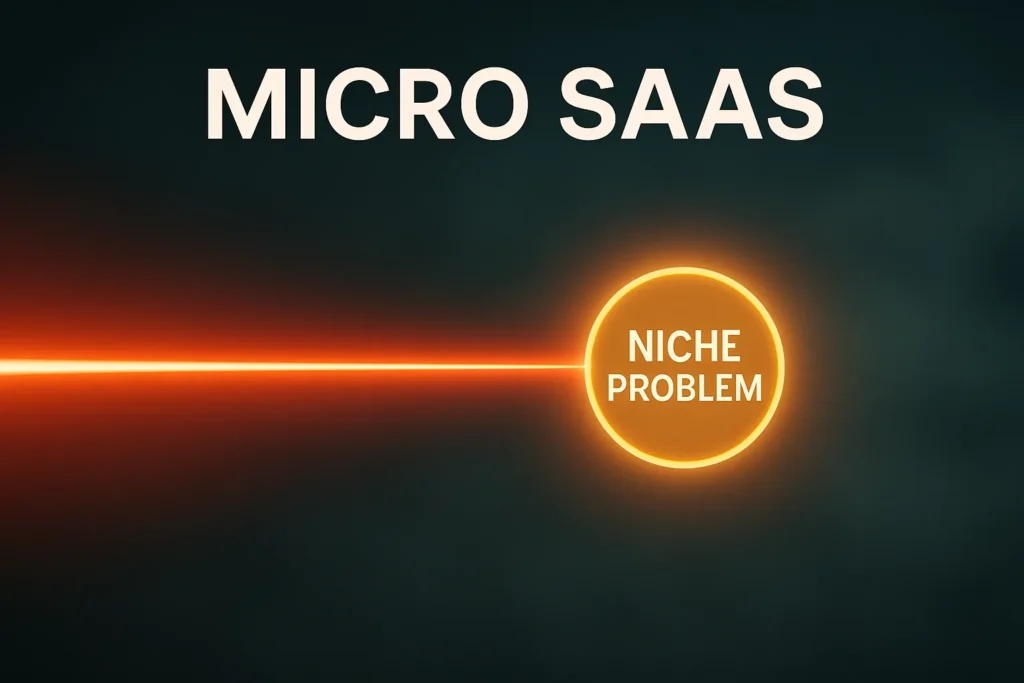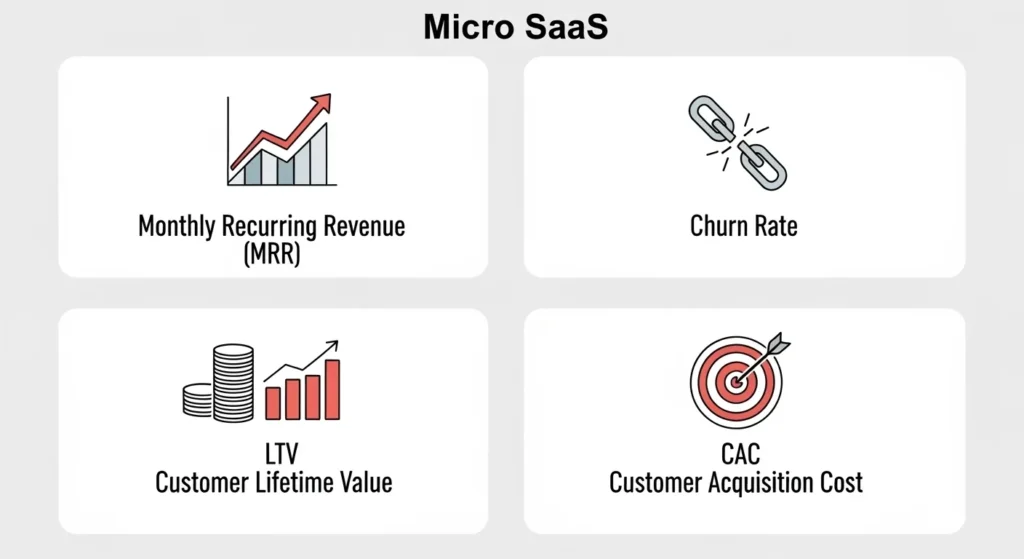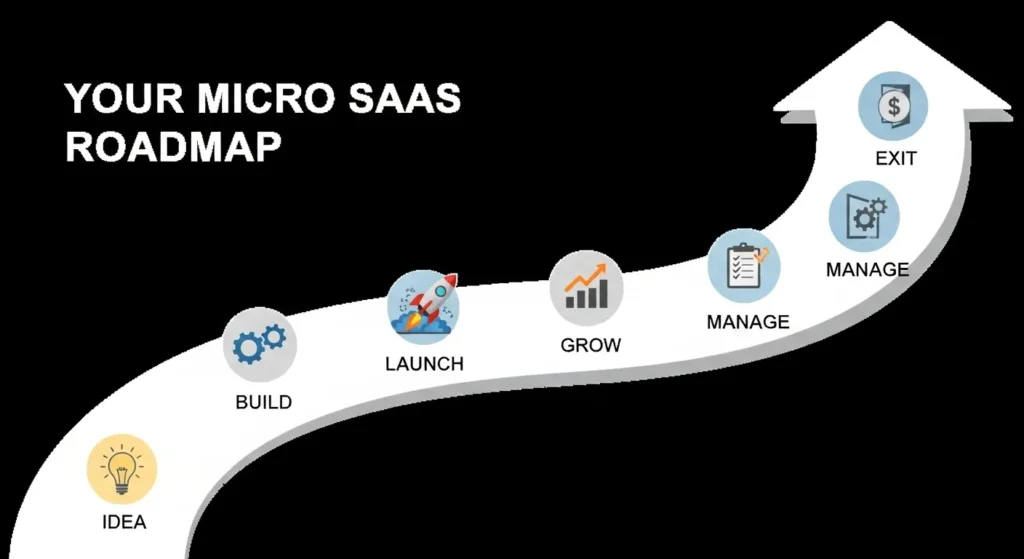The digital landscape is brimming with entrepreneurial opportunities, and among the most compelling is Micro SaaS. Far from the sprawling, venture-backed giants of traditional software, micro SaaS offers a lean, agile, and often bootstrapped path to building a profitable, sustainable business. Whether you’re a seasoned developer, a budding entrepreneur, or someone simply looking to create a valuable side income, understanding the intricacies of micro SaaS is your first step towards success.
This ultimate guide will take you through the entire lifecycle of a micro SaaS product – from spotting a golden idea to building, launching, growing, and eventually, if you choose, exiting your business. Consider this your central hub, providing a high-level overview of each critical stage, with links to deeper dives where you can explore every facet in detail.
What is a Micro SaaS Product?
At its core, Micro SaaS (Software as a Service) refers to a small, niche-focused software application, typically built and operated by a single founder or a very small team. Unlike large SaaS companies that aim for broad markets and complex feature sets, micro SaaS solutions target specific problems for a clearly defined audience. Think of it as a laser-focused tool designed to solve one particular pain point exceptionally well.
The beauty of micro SaaS lies in its simplicity, low overhead, and ability to be bootstrapped. It’s about providing immense value to a concentrated group of users, leading to predictable recurring revenue without the pressure of external funding or massive teams.
Want to understand the core distinctions? Explore our in-depth comparison: What is Micro SaaS and How It Differs from Traditional SaaS
Finding Your Goldmine: Niche Selection and Idea Generation
The journey of a successful micro SaaS begins with identifying an underserved niche and a compelling problem within it. This isn’t about reinventing the wheel but rather finding a specific gap that existing solutions either ignore, overcomplicate, or price out of reach for a particular segment.

- Best Niches: Micro SaaS thrives in areas where you can provide targeted value. This could be a specific industry such as software for local bakeries, a particular job function like a tool for freelance writers, or even a small, highly engaged community. The key is to find a niche where people are willing to pay for a focused solution to a real pain.
- Profitable Idea Generation: Ideas often stem from personal pain points, observing inefficiencies in your own work or that of others, or by improving existing, clunky solutions. Look for opportunities to automate tedious tasks, integrate disparate systems, or simplify complex processes. The most profitable ideas solve painful, recurring problems that users are actively searching for solutions to.
For a comprehensive look at identifying profitable niches and proven techniques for generating profitable ideas, explore our guide: Finding Your Goldmine: Best Niches & Profitable Ideas for Micro SaaS
Building & Launching Your Product: From Concept to Code (or No-Code)
Once you have a validated idea, the next phase is bringing your micro SaaS to life. This involves development, cost estimation, and crucial pre-launch validation.
- First Steps to Building: This typically involves outlining core features, designing a minimalist user interface, and choosing your development path. The emphasis in micro SaaS is on building a Minimum Viable Product (MVP) – the simplest version that delivers core value – to get it into users’ hands quickly.
- Development Costs: One of the most attractive aspects of micro SaaS is its lower barrier to entry. Development costs can range from almost nothing (for no-code solutions) to several thousand dollars, depending on complexity and whether you hire external help.
- Coding Skills? No, not necessarily! The rise of no-code and low-code platforms has democratized software development, enabling non-technical founders to build powerful micro SaaS products. However, some technical understanding can be beneficial.
- Idea Validation: Before you invest significant time and resources into building, it’s paramount to validate your idea. This involves talking to potential customers, gathering feedback, and even trying to pre-sell your solution to ensure there’s real demand.

Get a step-by-step walkthrough of the initial building process, understand the financial commitment, and find out if coding is a prerequisite in our dedicated article: Your First Steps: Building and Launching a Micro SaaS Product and for a detailed look into the financial side, visit: Decoding the Costs: How Much to Develop & Launch a Micro SaaS
Growth & Marketing Strategies: Attracting and Retaining Customers
Even the best product won’t succeed if no one knows about it. Effective marketing and a keen eye on key metrics are crucial for micro SaaS growth.
- Important Metrics: Unlike traditional SaaS which might focus on complex enterprise sales cycles, micro SaaS often emphasizes metrics like Monthly Recurring Revenue (MRR), Churn Rate, Customer Lifetime Value (LTV), and Customer Acquisition Cost (CAC). These help you understand profitability and sustainability.
- Finding Target Customers: Knowing your niche means knowing where your customers “hang out” online – be it specific forums, social media groups, industry events, or niche communities. Direct outreach and community engagement are often more effective than broad advertising.
- Marketing Strategies: For micro SaaS, content marketing (solving problems related to your niche), SEO, cold outreach, community building, and leveraging product-led growth (where the product itself drives acquisition, e.g., through virality or free tiers) are highly effective.
- Pricing Your Product: Setting the right price is a delicate balance. It needs to reflect the value you provide, cover your costs, and be attractive to your target audience. Common models include tiered subscriptions, usage-based pricing, or even freemium options.

Track your progress with these essential metrics and master customer acquisition with our guides on: Measuring Success: Essential Metrics for Your Micro SaaS Growth, Beyond the Build: Finding Customers & Marketing Your Micro SaaS, and The Price is Right: Strategizing Your Micro SaaS Pricing Model
Operations & Management: Keeping Your Micro SaaS Running Smoothly
As a solo founder or small team, efficient operations are paramount. This involves avoiding common pitfalls, managing customer relationships, and choosing the right technological backbone.
- Common Mistakes to Avoid: These can range from building something nobody needs (lack of validation) to over-engineering features, ignoring customer feedback, or getting bogged down in complex support. Simplicity and focus are your allies.
- Customer Support & Feedback: As a solo founder, streamlined support is vital. Automation, clear documentation, and leveraging community forums can help. Actively solicit and intelligently incorporate customer feedback to continuously improve your product.
- Best Tools & Tech Stacks: The right tools can dramatically reduce development time and ongoing maintenance. This includes modern programming frameworks, cloud infrastructure providers, payment gateways, and no-code tools.
- Security & Compliance: Even for micro SaaS, security and data privacy are non-negotiable. Implementing robust security practices and understanding relevant compliance regulations (e.g., GDPR, CCPA) builds trust and protects your business.
Learn from others’ experiences and manage your operations efficiently with our articles on: Navigating Pitfalls: Common Mistakes & Solo Founder Support for Micro SaaS, Powering Your Product: Best Tools & Tech Stacks for Micro SaaS, and Building Trust: Ensuring Security & Compliance for Your Micro SaaS
Scaling & Exiting Your Business: Long-Term Vision for Your Micro SaaS
What happens after your micro SaaS is profitable and stable? You have options: scale it further or consider an exit.

- Competing with Larger Companies: In crowded markets, micro SaaS can still thrive by maintaining its niche focus, offering superior customer service, or integrating with other platforms. Don’t try to out-feature the giants; out-serve them in your specific domain.
- Build or Buy? As your entrepreneurial journey evolves, you might consider acquiring an existing micro SaaS to expand your portfolio or save development time. Conversely, you might decide to sell your own creation.
- Scaling with Limited Resources: Scaling a micro SaaS doesn’t necessarily mean hiring a large team. It often involves automation, strategic integrations, optimizing marketing channels, and potentially outsourcing specific tasks to maintain your lean advantage.
- Selling or Exiting: A successful micro SaaS can be a valuable asset. Options range from selling it on marketplaces, finding a private buyer, or even continuing to run it as a passive income stream. Understanding its valuation and preparing for due diligence are key.
Explore your growth potential and long-term options with these guides: Thriving in the Market: Competing & Scaling Your Micro SaaS and Your Next Move: Build vs. Buy & Exiting Your Micro SaaS Business
Your Journey Starts Now
Micro SaaS represents a powerful paradigm shift, enabling individuals to build sustainable, impactful businesses on their own terms. It requires dedication, smart strategy, and a willingness to learn and adapt. By focusing on solving real problems for specific audiences, leveraging modern tools, and continuously iterating based on feedback, you can carve out your own success story in the world of software.
This guide provides the roadmap. Dive into the detailed cluster articles to equip yourself with the knowledge and tools you need for every step of your micro SaaS journey. The future is small, focused, and incredibly promising.

